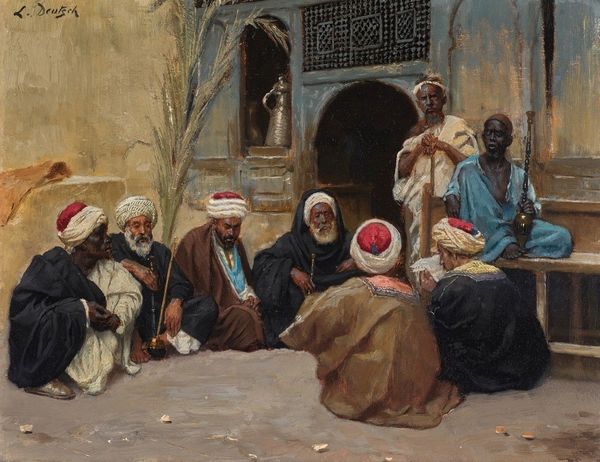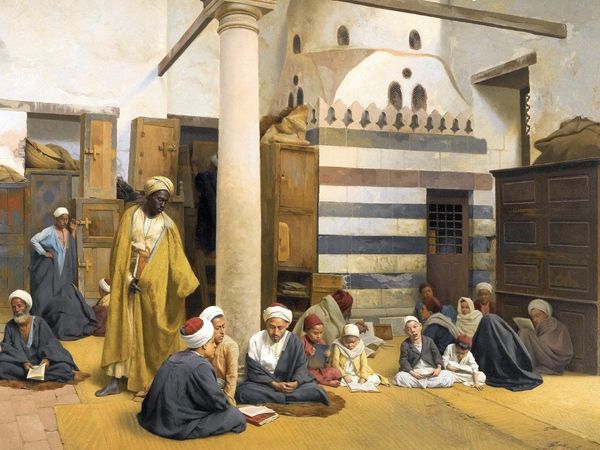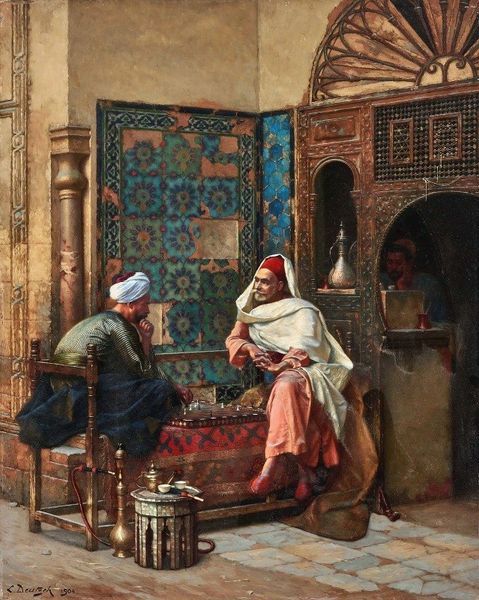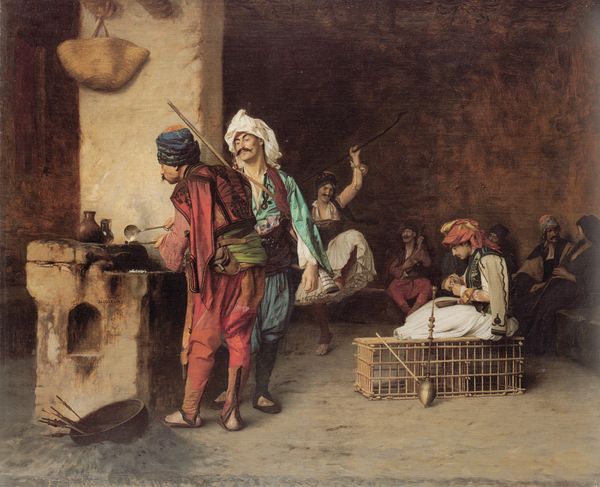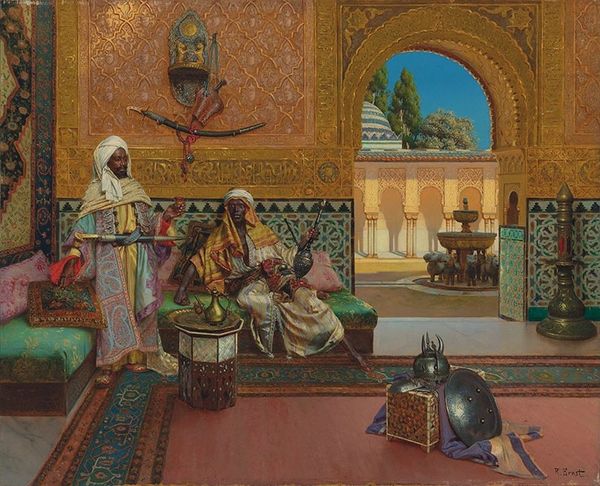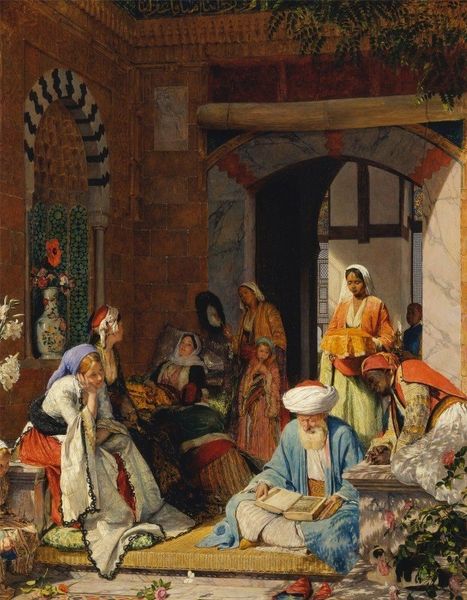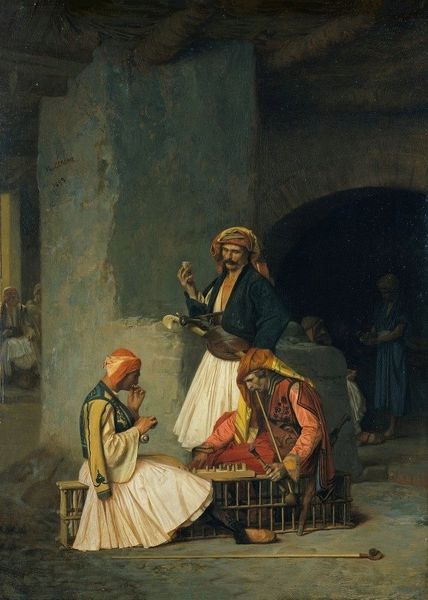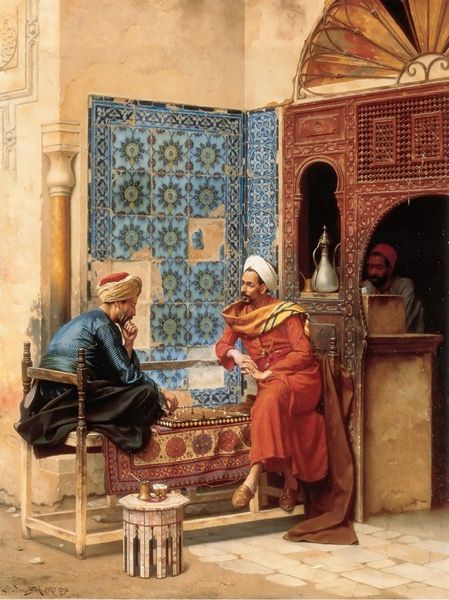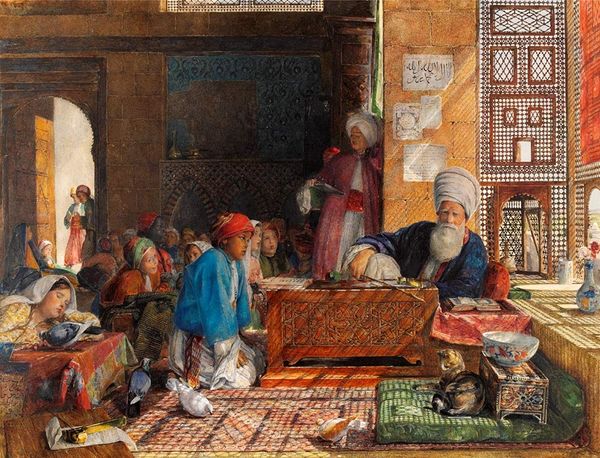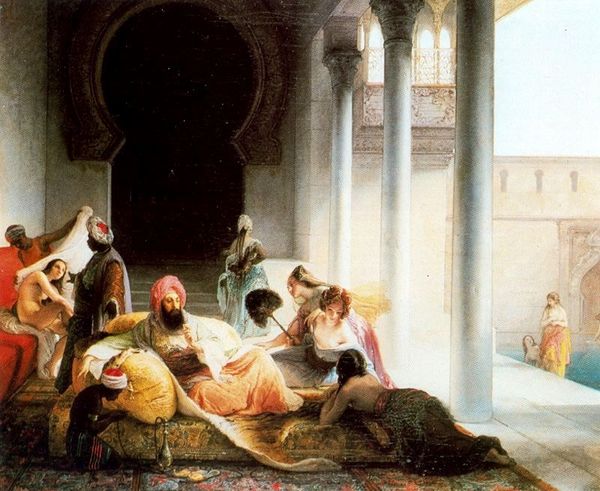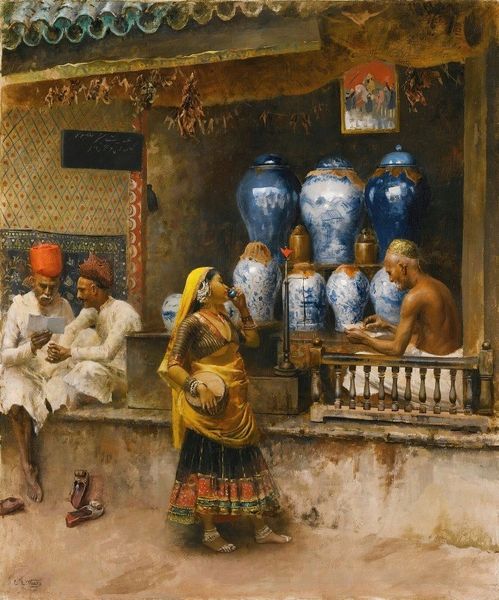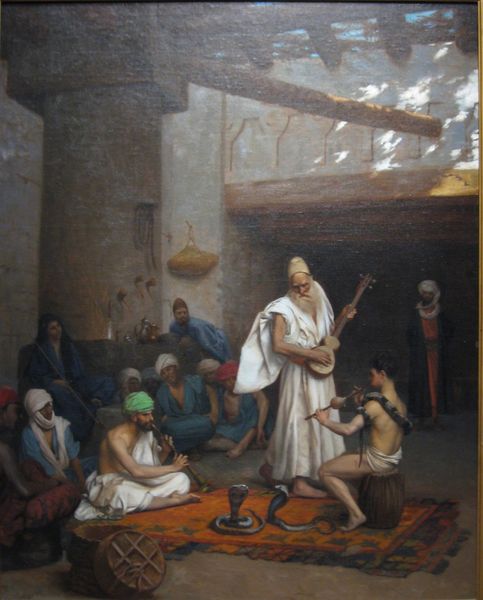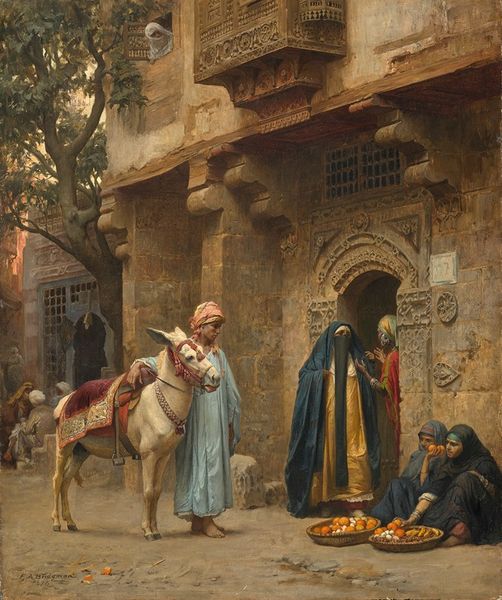
oil-paint
#
portrait
#
narrative-art
#
oil-paint
#
oil painting
#
group-portraits
#
orientalism
#
islamic-art
#
genre-painting
Copyright: Public Domain: Artvee
Curator: This is Ludwig Deutsch’s "A Refreshing Drink," painted in 1891. Editor: It strikes me as a surprisingly intimate snapshot, capturing a quiet moment amidst what I imagine is a bustling environment. The warm palette amplifies this sense of calm, doesn’t it? Curator: Absolutely. Deutsch was part of the Orientalist movement, and this piece really showcases its focus on genre painting—capturing scenes of everyday life, with of course, a European lens shaping its presentation of Islamic culture. The focus on the materials—the textures of the various textiles, the metal of the bowl, even the clay cups, it all speaks to Deutsch's keen observational skills. Editor: The painting gives off an aura of authenticity that's immediately compelling. Consider the scene: a group of individuals gathered around what looks like a street vendor in perhaps Cairo, sharing a cool beverage. But it's precisely that apparent "authenticity" that's so constructed. This piece reveals more about the European fascination with the "Orient" than the actual lived reality of Egyptians at the time. Deutsch’s work, popular in salons and exhibitions, reinforced specific narratives about the East for a Western audience. Curator: Yes, the exoticization is definitely there, but I also appreciate how the composition directs your attention. The central figure serving the drink, his blue robe contrasting with the stark background, anchors the scene. Look at how Deutsch used the fall of light to highlight this individual, it speaks of careful design choices when presenting laborers. Editor: Agreed, the staging is undeniable. And in examining the historical context, one wonders about the conditions under which Deutsch created this piece. Did he engage with the local artisan community, purchase goods and materials from them, or even employ local models? The canvas itself, the oil paints—they represent a specific artistic and economic system imposed upon a different cultural space. Curator: Indeed, and the success of works like these fed back into that system, further perpetuating particular narratives about the “Orient.” Even with those critiques in mind, though, one cannot overlook Deutsch's ability to capture textures, making you want to reach out and touch those robes or feel the cool clay of the cups. Editor: A potent reminder, then, that art always reflects the complex interplay between observation, creation, and reception, heavily colored by socio-political dynamics of the time. Curator: Precisely. And by recognizing the material construction of that imagery, we understand more fully the history it presents.
Comments
No comments
Be the first to comment and join the conversation on the ultimate creative platform.
